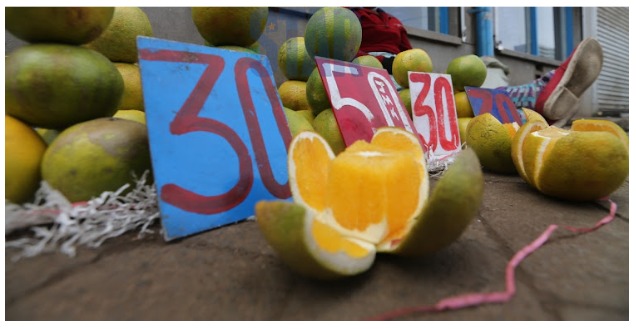Price tags of different products in Kenya market
In Kenya, market hubs have always played a pivotal role in the daily lives of citizens. These bustling centers of commerce, such as Marikiti, City, Park, and Kangemi, have historically been sources of affordable groceries and essential goods for countless Kenyan families. However, the economic landscape in Kenya has shifted in recent years, and many citizens now find themselves complaining about the limited purchasing power of the shilling when navigating these markets.
Kenya, like many other countries, has faced its fair share of economic challenges that have impacted the lives of its citizens. High inflation rates, fluctuating exchange rates, and the rising cost of living have taken a toll on households and businesses. These factors have continued to erode the purchasing power of the buyers.
What 2,000 Shillings Can Buy For You
According to a recent report, one of the most significant complaints among Kenyan buyers is the limited range of groceries they can buy with 2,000 shillings. In the past, reports have shown this amount would have allowed for a more substantial purchase, but today, it barely covers the basics. Buyers are often forced to make tough choices, prioritizing essentials like maize, rice, or beans while having to forgo fresh fruits, vegetables, and protein sources.
A recent interview conducted by one of the media stations showed that rising food prices are a major concern for Kenyan buyers. In markets that used to offer affordable options, the cost of essential items has steadily increased, leaving many struggling to feed their families nutritiously. Many buyers find themselves purchasing smaller quantities of groceries or opting for lower-grade produce. Reports confirm that the once vibrant and diverse range of products in local markets is gradually becoming less accessible to many Kenyan families.
Consider the case of City Park market, 2,000 shillings hardly stretches beyond purchasing a bag of potato, a few vegetables, and a minimal quantity of cereals. The budget does not allow a buyer to acquire other essential items like protein sources, or spices.
The market traders are also feeling the brunt of these complaints. Reduced purchasing power and increased buyer complaints have impacted their business. Some traders are struggling to maintain their livelihoods as they navigate the challenges of serving price-conscious customers while dealing with the pressure of their own rising costs of operation.
To address the multifaceted challenges businesses are facing in market hubs today, it is crucial to embrace a multi-stakeholder approach. It is imperative to address these challenges by exploring innovative solutions, such as providing training and support for vendors to adapt to changing market dynamics. Preserving and revitalizing these food markets is essential not only for economic stability but also for social well-being of the communities they serve.
Collaboration between government bodies, market management authorities, business associations, NGOs, and the local community is not only effective but also essential for creating sustainable solutions that will benefit all stakeholders. By working together, we can revitalize these markets, ensuring their continued importance in the economic and social development of Kenya and beyond.
Written by: Ruth Kinuthia – Communications Officer @Coamana

